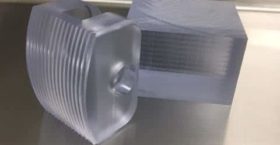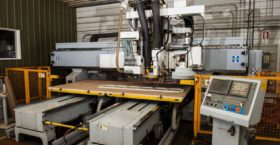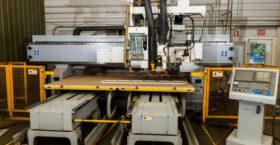
Some of the most innovative gears today are machined from advanced engineering plastics. Machined plastic gears have been growing in popularity because they help resolve many of the problems inherent to metal gearing systems. Gears have a set of well-known performance problems that repeatedly show up no matter the application. The most common problems are […]
Read More »
Precision plastic components are in high demand these days as more and more industries design parts with advanced engineering plastics in mind. For almost four decades, Reading Plastic Machining & Fabrication has been providing precision machined components for clients across every industry. We are a well-known industry leader for tight tolerance plastic parts, and our […]
Read More »
Plastic machined parts are revolutionizing nearly every industry, thanks to their superior properties that offer benefits in a diverse range of applications. Precision plastic industries are using specialty plastics to create better products, lower manufacturing costs, reduce weight, enhance strength, and other advancements. As a trusted plastic parts manufacturer for nearly four decades, Reading Plastic […]
Read More »
Engineering-grade plastic resins were first introduced in the early 1950s, and for nearly 70 years manufacturers have been enjoying the advantages of plastic materials. In the past, the most common application has been in converting metal parts to plastic, but with the rapid development of new advanced plastics that can outperform metal at lower cost, […]
Read More »
The CNC milling process uses computer-controlled machine tools to produce highly complex shapes and parts that can hold close tolerances. Perfect for rigid materials – including the most advanced engineering plastics – CNC milling machines are versatile enough to produce a wide variety of parts, including ball joints, brackets, spindles, prototypes, and much more. What […]
Read More »
When you need custom plastic tank fabrication, call the experts at Reading Plastic. As an industry leader in specialty plastic CNC machining and fabrication for over thirty years, Reading Plastic can produce the custom plastic tanks you need with speed and precision. Whether your application demands tight tolerances or advanced plastics, we deliver high-quality parts […]
Read More »
The chemical resistance of plastics is determined by a particular plastic’s chemical formula. Some plastics can withstand strong acids with negligible effects on their mechanical properties, while others will decompose or dissolve in a short period of time. In this blog we will look at 7 plastics that have excellent chemical resistance. Reviewing the Superior […]
Read More »
As experts in close tolerance machining, we are frequently asked what tolerances we can hold. The tolerance a part can hold is dependent on several factors, including part configuration, material choice, and the type of machining operation and technique. Part design can have the biggest impact on tolerances, and improvements during the design phase can […]
Read More »
The Manufactured Food Regulatory Program Standards (MFRPS) of the FDA are the benchmark used by each state for food and beverage manufacturers. Last updated in 2016, these increasingly strict regulations are meant to reduce foodborne illness hazards, which afflict roughly 48 million Americans each year. In order to remain in compliance with FDA standards, food […]
Read More »
What is Vespel®? When it comes to advanced industrial plastics, Vespel® runs at the head of the pack. From bearings to critical aircraft parts, this highly durable polyimide can withstand the harshest operating conditions on the planet, thanks to its advanced properties. If you need a plastic that provides excellent, reliable performance in extreme applications, […]
Read More »
When it comes to applications that require high-performance plastic, PEEK is often a top recommendation. You may be wondering, what is PEEK plastic and why is it so popular? We often refer to PEEK as the “powerhouse polymer” because of its unique combination of outstanding properties that make it suitable for a wide array of […]
Read More »
Custom CNC routing is an excellent way to produce high volumes of precise, identical plastic parts quickly. At Reading Plastic, we have been proud to offer expert custom CNC routing services for over three decades. With our state-of-the-art equipment and highly trained staff, we can quickly produce the precise, accurate parts you need, whether you […]
Read More »